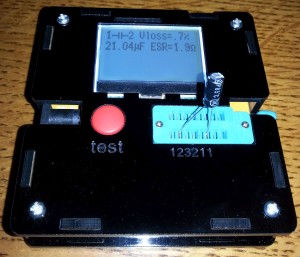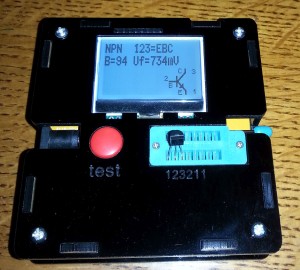Sometimes it seems like we broadcast engineers now live in a black box era, when we tend to just retire and recycle a failed piece of equipment instead of repairing it. This can be due to the faster obsolescence cycle as devices are marketed with vast improvements in performance and storage. Besides, what devices now come with schematics? And even if they did, you would have to contend with multilayer boards and tiny surface-mount components.
The other day I had a large switching power supply fail, and found a broken replacement someone had shelved rather than repaired. By large, I mean 2000 watts. While I don’t have a schematic, these supplies have a list of “usual suspects” in the hunt for failures–electrolytic caps and the big switching MOSFET. Rather than pay the $1,000 fee a repair facility wanted, I figured I would take a crack at it. First, I thought I would look for an ESR meter that would reveal electrolytic capacitor condition in-circuit.
Turns out there’s a revolution in component testing.

A quick search on eBay for “component tester” or “esr meter” will come back with thousands of little devices based on the specialized Atmel ATMega328P component measurement chip. Basically, you can have a meter that uses this chip, with its case and air shipment from China for less than $30. Most sell without a case, but I bought one that came with a cheap, laser-cut box to hold everything together and give it a finished look.
Here’s what it will do:
- measure resistance, capacitance, ESR, current gain, and junction forward voltage
- identify devices like resistors, capacitors, diodes
- measure two components simultaneously so that you can see both sections of a potentiometer, for instance
- differentiate transistors, drawing a symbol for bipolars and different types of FETs with polarity and pinouts designated
Here’s what it won’t do:
- Measure reverse zener breakdown voltages above 4.5V
- Measure frequency characteristics
- Measure small capacitors (below 25pF)
- Identify component arrays of any kind, like logic circuits or analog amplifiers
- Measure higher trigger voltage thyristors, triacs and diacs

Mine took just over a week to show up. I’ve made a few measurements and just amazed at the simplicity compared to, say, the capacitor and transistor checkers of the 1960s from the likes of Sencore and Heathkit. You do have to be careful to discharge electrolytic capacitors before measuring them. Note that you might have to make wire extenders if you want to measure large devices or those in-circuit.
There is another device I haven’t checked out–a curve tracer circuit for about $50 that can give you more information about the dynamic characteristics of components.
I’ll let you know how the switching power supply fix goes.
